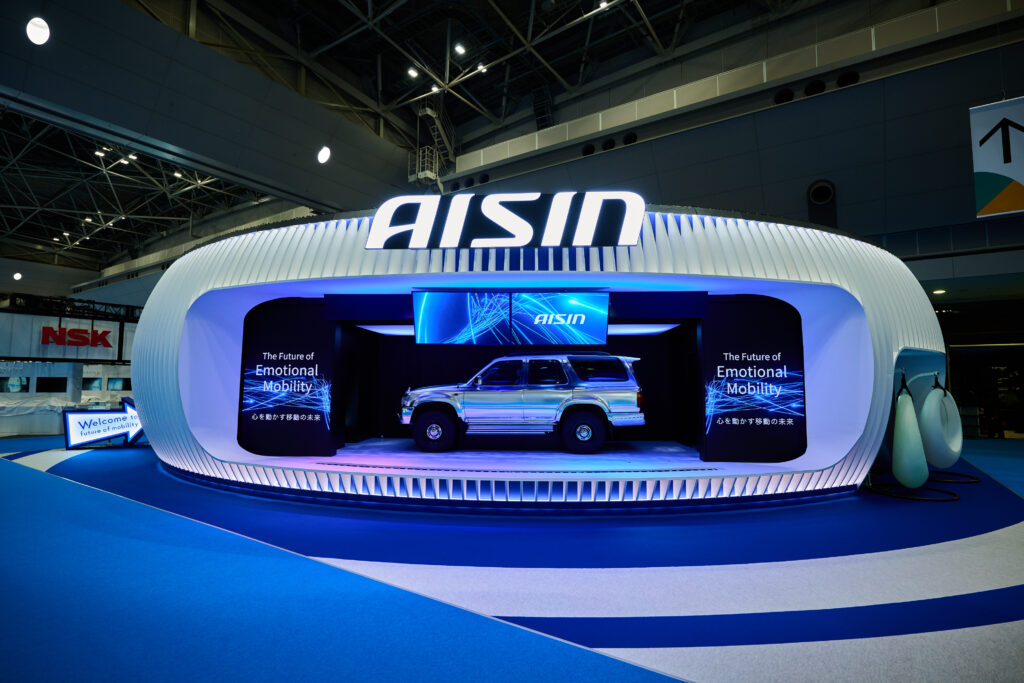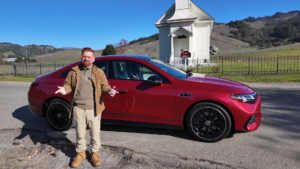The Future Is Feeling: How Smart Tech Is Reshaping Cars

At the 2025 Japan Mobility Show, AISIN’s president, Moritaka Yoshida, outlined what many automakers are quietly racing toward: vehicles that sense emotion, manage their own energy, and transform from mere machines into mobile companions.
That may sound poetic, but beneath the rhetoric sits very real engineering: consolidated EV drive units, perovskite solar cells, and biometric sensing that interprets a driver’s stress level or mood.
While AISIN supplies everyone from Toyota to Subaru, these ideas reflect a broader truth. The post-Tesla decade is forcing every supplier and OEM to reimagine what mobility means when the hardware race for horsepower, range, and torque is no longer enough. Now the contest is for intelligence, sustainability, and emotional engagement.
According to the U.S. Department of Energy, more than 1.5 million pure EVs are already on American roads, and that number could triple by 2030. Bloomberg estimates that global EV adoption is rising by 35 percent year-on-year. The technology that debuts in Tokyo this autumn will quietly surface in mid-decade U.S. models.
How does it compare to rivals?
Japan’s “emotional mobility” may sound philosophical next to the brute-force innovation coming from the U.S. and Europe. But the substance aligns neatly with what companies like Ford, GM, and Tesla are trialing at home.
• Ford’s BlueCruise 1.4 now allows genuine hands-off driving on more than 200,000 miles of mapped North American highways.
• General Motors’ Ultra Cruise, launching in the 2026 Cadillac Celestiq, targets 95 percent of all U.S. roads.
• Tesla’s Full Self Driving Beta v13 continues its iterative march toward full autonomy.
AISIN’s approach to AI-driven sensory systems that “recognize, judge, and execute” tasks mirrors these ambitions but focuses on integration. Instead of building cars, AISIN builds the nervous system that many manufacturers depend on.
Meanwhile, its integrated EV powertrain project bundles drive, conversion, and cooling into a single, compact unit designed to extend range and free cabin space. U.S. suppliers like BorgWarner and Magna are chasing the same goal: better thermal efficiency and simplified assembly for American EVs such as the Chevy Equinox EV and Ford Mach-E GT.
Even the energy value chain idea, creating, storing, and managing household power via vehicle-linked fuel cells, echoes pilot programs at GM’s Hydrogen Hummer labs and Toyota’s North Carolina fuel-cell plant.
What sets AISIN apart is its emphasis on emotion. Picture a car that detects fatigue, adjusts seat support, dims cabin light, or recommends a scenic detour. It’s not science fiction. Nissan’s 2025 Leaf prototype already tracks driver stress using heartbeat sensors.
Every major transformation in automotive history began quietly: fuel injection, anti-lock brakes, and GPS navigation. “Emotional mobility” could be the next such inflection point.
In the U.S., the implications extend far beyond convenience. Integrated heat-management systems could cut EV production costs by as much as 10 percent, according to Automotive News. More intelligent regenerative braking and power consolidation could add 30–50 miles of range without increasing battery capacity. That matters when the average American commute is 41 minutes each way, and charger anxiety still defines adoption.
On a sustainability level, technologies like perovskite solar roofing and home fuel-cell integration hint at a circular ecosystem: cars that power homes by night and charge themselves by day. For states such as California and Texas, where the grid strains under heat waves that’s not a gimmick but a potential relief valve.
AISIN’s “Doctor’s Beloved Car” concept, a 1990s Hilux Surf retrofitted with intelligent tech, underscores another movement gaining traction in the U.S.: vehicle upcycling. Instead of scrapping older models, engineers retrofit them with modern safety, connectivity, and clean-energy modules. Given that America has more than 278 million registered vehicles, keeping beloved cars on the road responsibly could have a profound environmental payoff.
Ultimately, this evolution suggests the car of 2030 will be less a possession and more a companion, an AI-enhanced travel partner aware of your preferences, habits, and even moods. It will help manage household energy, plan trips, and safeguard mental bandwidth in ways the smartphone never could.
As ever, the competition will be fierce. Tesla remains a benchmark; Hyundai and Kia are charging ahead with solid-state battery timelines; Rivian and Lucid keep redefining luxury utility. Yet it may be the suppliers the AISINs, the Bosches, the Magnas who quietly script the next chapter of automotive intelligence.
The road ahead
The race is on to make mobility not only cleaner but smarter. When software meets empathy, the daily commute could become a wellness ritual rather than a stress test.
For American drivers, the near future will be defined less by how quickly a car accelerates and more by how seamlessly it integrates into life anticipating needs, conserving power, and maybe even sensing when you’ve had a rough day.
If the innovations revealed in Tokyo are any indication, tomorrow’s cars won’t just move us; they’ll understand us.






